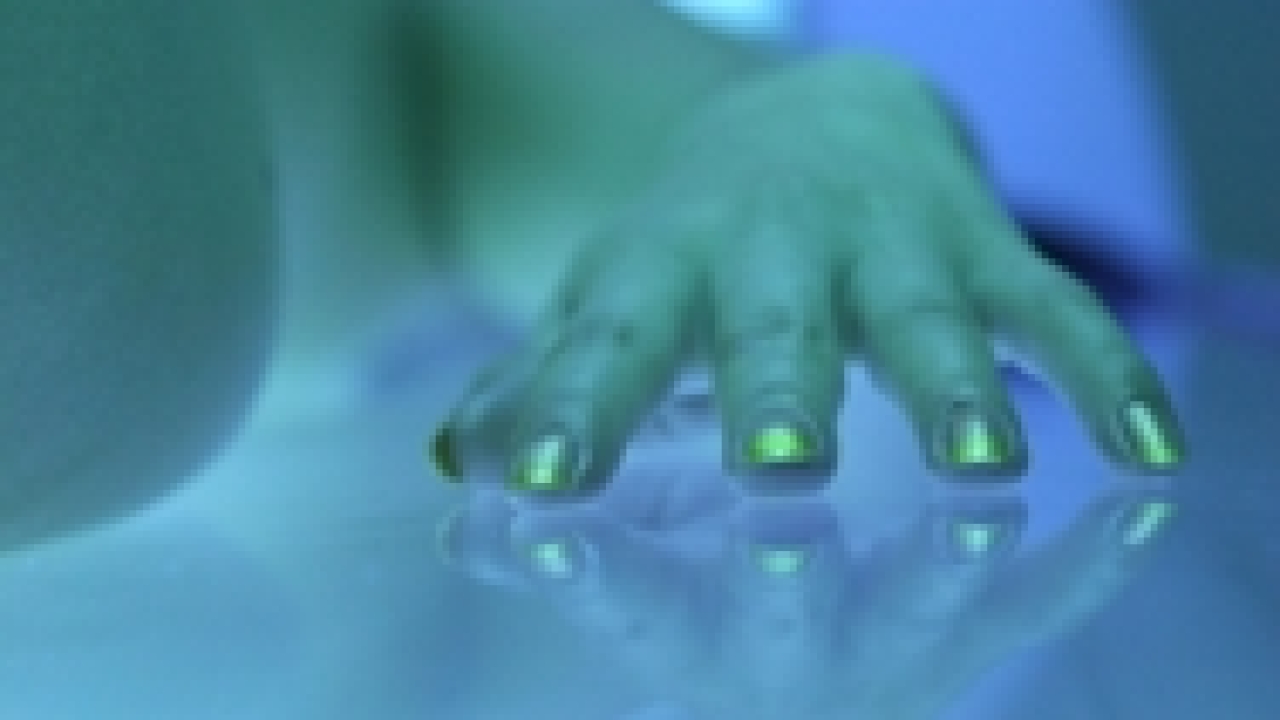The power of touch

Dr Catherine Barnes, director of the Faraday Consultancy at the University of Leeds, introduces the concept of quantified touch and discusses why the 'feel of the pack' could improve consumer experience
Almost all packaging found in stores is regularly handled and touched by consumers, so why is the ‘feel’ of the pack rarely designed to improve the consumer’s experience? Faraday, a technical consultancy, has been working closely with researchers at the University of Leeds to develop the Power of Touch, a process that delivers the technical specification of a surface that can convey brand values to the consumer.
We first learn to communicate through our sense of touch as babies, and arguably it remains our richest means of emotional expression throughout life. Touch is an important emotion for all of us. In fact, it is one of the most effective ways to communicate and can deliver many different benefits:
| Biological: studies on infants link touch to healthy development. Touch reduces stress, releases serotonin and oxytocins, and reduces cortisone levels, which are all positive effects.
| Communicative: touching produces a series of neural, glandular, muscular and mental changes that we interpret as emotion.
| Psychological: touch can provide reassurance and comfort, and aids in the development of self identity and self-esteem.
| Social: research has linked the quality of touch experiences to competence in interpersonal relationships. The ability to trust others, and understand the needs of others, is directly related to touching.

Touching products and packaging has a significant influence on our perception of them. When our fingers touch the surface of a pack, the many touch receptors in our fingertips trigger and send messages to our brain. These messages combine with our previous knowledge, and as a result we experience a series of emotions. Clearly, brand owners are keen to ensure that the emotions delivered by their products match the brand, but until now, there has not been a systematic way to design a surface to deliver a particular emotion.
When we touch a surface, we experience a composite of three different attributes: the substrate material, any added lacquers or textures, and the shape or form of the pack. Because substrate materials and pack shapes are frequently predetermined in the many packaging development processes, the main opportunity to engage the consumer is to add a texture or lacquer effect to the pack surface. The real challenge then, is to determine whether the chosen lacquer represents the brand accurately, and delivers the right experience.
One of the biggest challenges, when designing touchable surfaces, is that we have limited vocabulary to describe the tactile experience. Through extensive market research, brand owners know exactly what their consumers want, and this is usually expressed in emotional language, such as enjoyable, natural, or trustworthy. Most designers can instinctively imagine and draw a sexy shape, but how do they specify a luxurious texture? And, if designers struggle with this, how on earth are printers and converters able to respond to brand owner requests to improve the tactile properties of their products to ‘make them more natural’ or to ‘improve the freshness’?
The research from the University of Leeds has unpicked the different aspects of the touch activity. It has resulted in the development of a process that takes emotional attributes as an input, and turns these into a set of technical specifications that enables the surface to be manufactured. The first thing they analyzed was what happens when our fingers touch a surface. It is the touch receptors in our fingertips that actually experience the surface. There are three types of receptors in our skin that send messages to the brain. Mechanoreceptors sense pressure and distortion, thermoreceptors monitor temperature, and nociceptors are responsible for pain sensation. The most important ones are the thermoreceptors and mechanoreceptors. In turn, there are four types of mechanoreceptors:
| Merkel’s Disc – sensitive to edges, corners, and curvature
| Meissner Corpuscles – respond to stroke or fluttering touch
| Ruffini Ending – detect tangential forces generated in the skin
| Pacinian Corpuscles – sensitive to vibration
By looking at when each receptor triggers, the researchers were able to identify that the most important surface design parameters for emotion generation were: friction (or stickiness), compliance (or stiffness), and roughness (or texture). In addition, they found that the temperature of the surface also impacts upon the perceptions.
The next step is to measure the surface. This has its own problems. The researchers needed to be able to measure a pack in exactly the same way that your finger measures the surface. Standard engineering measurements did not deliver this. So, the artificial finger (pictured above) was developed. The finger is designed to work in exactly the same way that a finger works, and is made from a bony core, soft tissue, dermis and epidermis. It even has a fingerprint, which was necessary to set up the vibrations. The finger provides a standardized measurement tool that can ‘feel’ a surface in exactly the same way that our own finger does. Instead of the messages being sent to our brain, the artificial finger sends the data direct to a computer. In this way, measurements of roughness, friction, compliance, and thermal conductivity are captured at the pack/fingertip interface.
Once we have the actual measurements for what the artificial finger is feeling, we can do all sorts of things with the information. If we want to replicate a natural surface, like hessian or a leaf, for example, we can measure the leaf using our artificial finger. Any surface mimicking the leaf can also be measured the same way. When the results are compared, if they show a good fit, we can be sure that consumers will respond to touching the surface mimic in the same way as they respond to a real leaf.
There are many other ways in which the artificial finger can support the packaging development process. Another approach is to use it to check for consumer acceptance when a different substrate or material is being considered for the packaging, say for light-weighting or cost reasons.
However, perhaps the real power of the artificial finger is that it can be used to design new surfaces that deliver a specific emotional response. The researchers have developed a process that takes an emotion and delivers a technical surface specification. This is how the process works:
| The first stage is to find out from the brand owner exactly what is the required emotion, and decompose it into a set of ‘need statements’ such as: ‘makes me comfortable’ or ‘feels trustworthy’.
| A set of a dozen or so sample surfaces are prepared, which vary in a known manner, for example different lacquers, substrates, and textures.
| Participants in a self-report survey are then asked to touch the surfaces and rate them against the ‘need statements’.
| In parallel, these sample surfaces are measured using the artificial finger to understand fully the surface characteristics that the participants are experiencing.
| Multivariate statistics are then used to find out the relationship between the surface measurements and the participant ratings.
| The results indicate the ‘ideal’ surface that will deliver a particular emotional need.
| The surface is expressed in terms of numerical values, which printers or converters can use to source suitable inks or coatings.
For the first time, there is a translation process which allows brand owners and converters to discuss and develop surface design. Faraday is now working closely with a number of brand owners and converters to achieve this process, and produce unique surfaces that consumers can really enjoy.
Stay up to date
Subscribe to the free Label News newsletter and receive the latest content every week. We'll never share your email address.

